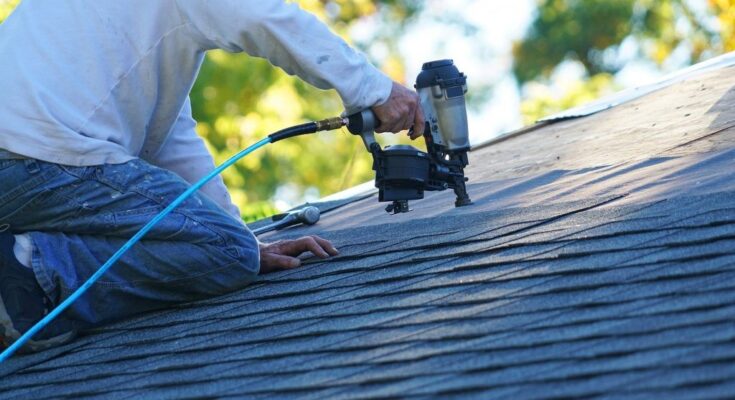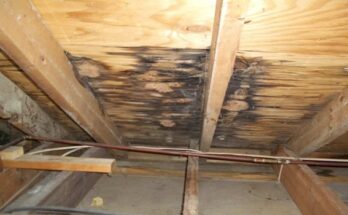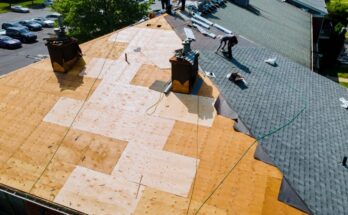Your roof is your home’s first line of defense against the elements, but bad weather can put it to the test. From heavy rain and strong winds to hailstorms and snow, various weather conditions can cause damage to your roof, compromising its integrity and potentially leading to costly repairs. In this guest post, we’ll delve into the common challenges that bad weather can pose to your roof and provide insights on how you can protect your home from these risks. Understanding these challenges and taking proactive measures can help you maintain a sturdy roof that withstands the elements for years.
Weather’s Impact on Roofs
Importance of Understanding Weather
Homeowners must understand how weather affects their roofs to prevent costly damage. By knowing the typical weather patterns in their area, homeowners can better prepare for potential challenges and take preventive measures.
Common Weather-Related Challenges
Common weather-related challenges include heavy rain, strong winds, hail, and snow accumulation. Each can damage roofs, leading to leaks, structural issues, and decreased energy efficiency.
Roofing Solutions for Weather Challenges
To address weather-related challenges, homeowners can consider several roofing solutions. These may include regular inspections and maintenance, using high-quality roofing materials, ensuring proper ventilation and insulation, and implementing measures to protect against wind and water damage.
Heavy Rain
Causes and Signs of Roof Leaks
Various factors, including damaged shingles, clogged gutters, or improper flashing, can cause roof leaks. Signs of roof leaks include water stains, mold growth, and musty odors in the attic or ceiling.
Effects of Water Damage
Water damage can lead to structural issues, mold growth, and decreased energy efficiency. Addressing roof leaks promptly to prevent further damage to the home is essential. Regular Los Angeles roof repair can help maintain the integrity of your roof and protect your home from costly water damage.
Repair Solutions for Water Intrusion
To repair roof leaks, homeowners should first identify the source of the leak. This may involve inspecting the roof for damaged shingles or flashing and fixing any issues found. Additionally, ensuring proper attic ventilation and insulation can help prevent future leaks.
Strong Winds
Wind Uplift and Roofing Materials
Certain roofing materials, such as asphalt shingles, are more prone to wind uplift than others. Homeowners in high-wind areas should consider using materials designed to withstand strong winds, such as metal roofing or impact-resistant shingles.
Risks of Wind-Driven Debris
Wind-driven debris, such as tree branches or flying objects, can significantly damage roofs. Homeowners should regularly inspect their roofs for signs of damage and promptly repair any issues to prevent leaks and structural damage. Regular roof repair San Francisco is essential for maintaining the integrity of your home.
Strengthening Your Roof Against Winds
To strengthen roofs against solid winds, homeowners can consider installing hurricane straps or clips to secure the roof to the home’s structure. Additionally, regular roof inspections and maintenance can help identify and address potential issues before they become more significant problems.
Hailstorms
Hail Impact on Roofing Materials
Hailstorms can wreak havoc on roofing materials, especially asphalt shingles. The impact can cause granule loss, fractures, and punctures, compromising the roof’s integrity. It’s essential to inspect the roof for signs of hail damage, such as dents and indentations, to accurately assess the problem’s extent.
Assessing Hail Damage
Assessing hail damage requires a detailed inspection by a professional. They will look for signs like bruising, cracks, and missing granules. It’s crucial to address any damage promptly to prevent leaks and further deterioration. Repair and Replacement Options: Depending on the severity of the damage, repair or replacement may be necessary. Minor dents and cracks can often be repaired, but extensive damage may require replacing the affected area or roof.
Snow and Ice
Risks of Snow Load
Heavy snow can significantly strain a roof, leading to structural damage or collapse. To prevent these risks, it’s essential to remove excess snow buildup. Causes and Prevention of Ice Dams Ice dams form when snow melts and refreezes at the roof’s edge, causing water to back up under the shingles. Proper insulation and ventilation can help prevent ice dams from forming, protecting the roof from damage.
Handling Snow And Ice Damage
If snow or ice has caused damage to your roof, it’s crucial to address it promptly. Clearing snow from the roof and gutters can help prevent further damage. If ice dams have formed, safely removing them and addressing any leaks is essential to protect your roof and home.
Extreme Heat
Roof Temperature Regulation
Extreme heat can cause the roof to expand and contract, leading to cracks and leaks. Proper insulation and ventilation can help regulate the roof’s temperature, reducing the risk of damage.
Effects of UV Exposure
UV rays can break down roofing materials over time, causing them to degrade and become brittle. Regular inspections and maintenance can help identify and address UV damage before it becomes more significant.
Heat-Related Roofing Solutions
Installing heat-reflective roofing materials can help reduce the roof’s temperature, minimizing heat-related damage. Additionally, proper attic insulation and ventilation can help regulate the temperature, prolonging the life of your roof.
Freezing and Thawing
Freeze-Thaw Damage and Signs
Freeze-thaw cycles, standard in cold climates, can cause significant damage to roofs over time. Signs of freeze-thaw damage include cracked or missing shingles, water leaks in the attic, and sagging or buckling roof sections. These issues can lead to more severe problems if not addressed promptly.
Preventive Measures for Cold Climates
To prevent freeze-thaw damage, homeowners should ensure their roofs are insulated and ventilated. Regular inspections and maintenance can help identify and fix potential issues before they become significant problems, aiding in effective roof repair Newark. Installing a waterproof membrane under the shingles can also protect against water infiltration.
Repairing Freeze-Thaw Damage
If freeze-thaw damage has already occurred, it must be repaired promptly to prevent further deterioration. This may involve replacing damaged shingles, repairing or replacing flashing, and sealing leaks. Hiring a professional roofing contractor for these repairs is recommended to ensure they are done correctly and safely.
In conclusion, being aware of the potential challenges of bad weather and taking proactive steps to protect your roof can save you time, money, and stress in the long run. Regular inspections, maintenance, and the use of high-quality materials can significantly extend the life of your roof and ensure that it remains strong and resilient against the elements. By understanding the specific risks associated with your local climate and weather patterns, you can effectively tailor your maintenance efforts to address these challenges. Remember, a well-maintained roof protects your home and enhances its overall value and curb appeal.




